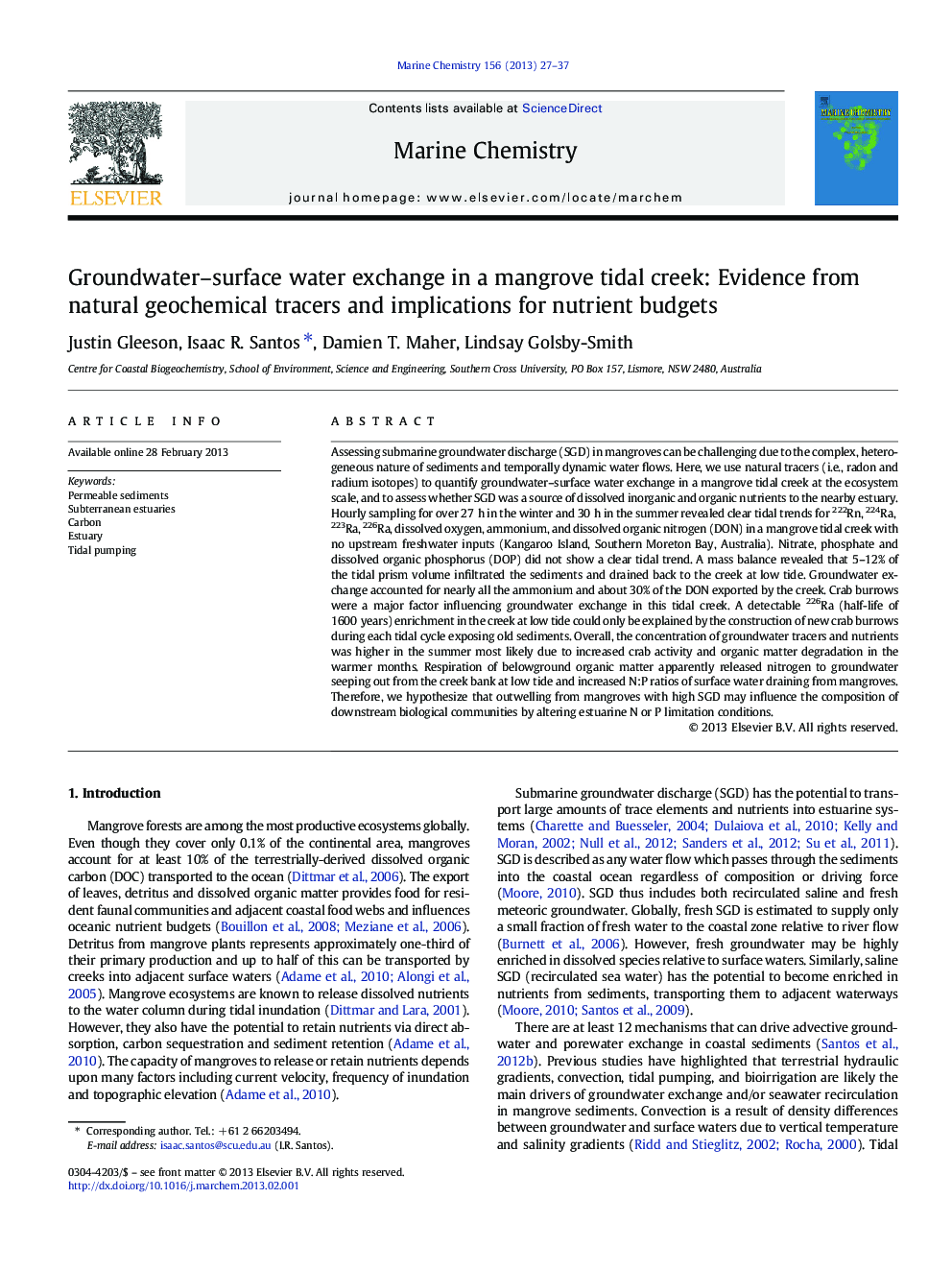| کد مقاله | کد نشریه | سال انتشار | مقاله انگلیسی | نسخه تمام متن |
|---|---|---|---|---|
| 1261313 | 1496679 | 2013 | 11 صفحه PDF | دانلود رایگان |

• Radon and radium isotopes were used to quantify seawater recirculation in sediments.
• 5–12% of the tidal prism volume infiltrated the sediments.
• Groundwater accounted for all the ammonium and at least 30% of the DON exported.
• Crab burrows seemed to be the most important factor influencing groundwater exchange.
• Groundwater exchange increased N:P ratios of surface waters.
Assessing submarine groundwater discharge (SGD) in mangroves can be challenging due to the complex, heterogeneous nature of sediments and temporally dynamic water flows. Here, we use natural tracers (i.e., radon and radium isotopes) to quantify groundwater–surface water exchange in a mangrove tidal creek at the ecosystem scale, and to assess whether SGD was a source of dissolved inorganic and organic nutrients to the nearby estuary. Hourly sampling for over 27 h in the winter and 30 h in the summer revealed clear tidal trends for 222Rn, 224Ra, 223Ra, 226Ra, dissolved oxygen, ammonium, and dissolved organic nitrogen (DON) in a mangrove tidal creek with no upstream freshwater inputs (Kangaroo Island, Southern Moreton Bay, Australia). Nitrate, phosphate and dissolved organic phosphorus (DOP) did not show a clear tidal trend. A mass balance revealed that 5–12% of the tidal prism volume infiltrated the sediments and drained back to the creek at low tide. Groundwater exchange accounted for nearly all the ammonium and about 30% of the DON exported by the creek. Crab burrows were a major factor influencing groundwater exchange in this tidal creek. A detectable 226Ra (half-life of 1600 years) enrichment in the creek at low tide could only be explained by the construction of new crab burrows during each tidal cycle exposing old sediments. Overall, the concentration of groundwater tracers and nutrients was higher in the summer most likely due to increased crab activity and organic matter degradation in the warmer months. Respiration of belowground organic matter apparently released nitrogen to groundwater seeping out from the creek bank at low tide and increased N:P ratios of surface water draining from mangroves. Therefore, we hypothesize that outwelling from mangroves with high SGD may influence the composition of downstream biological communities by altering estuarine N or P limitation conditions.
Journal: Marine Chemistry - Volume 156, 20 October 2013, Pages 27–37